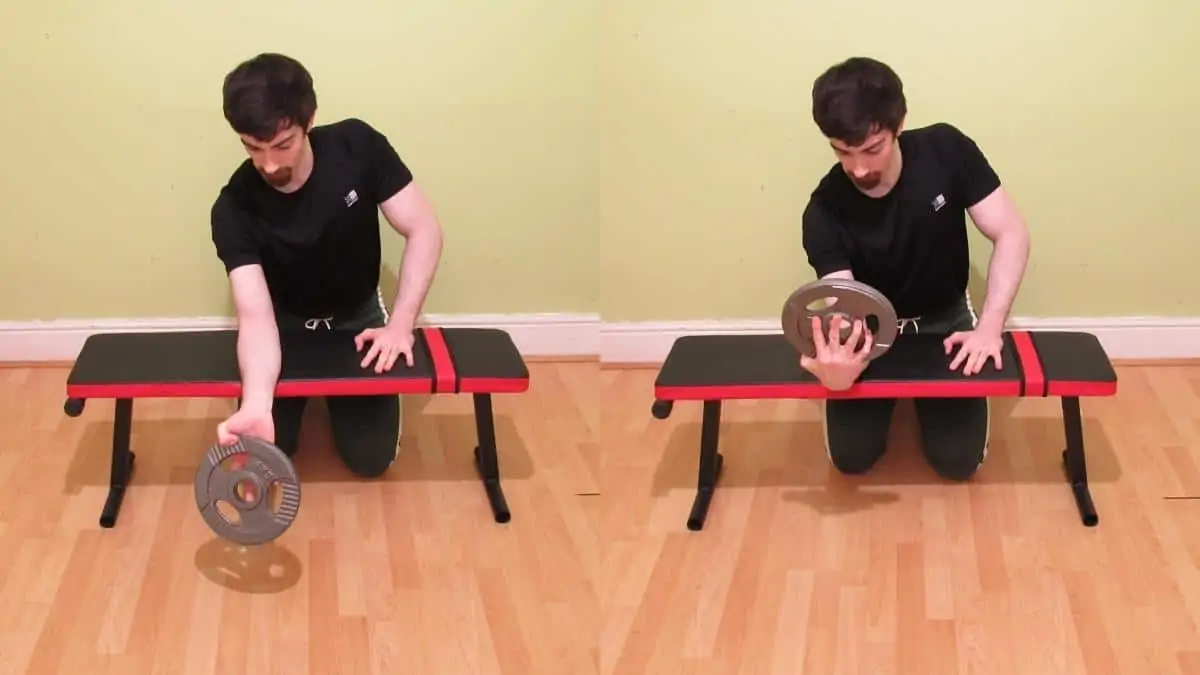Plate wrist curls—however unconventional they may be—are a top quality drill to include in your forearm training program because they simultaneously beef up your flexors while strengthening your grip.
As well as building mass over your forearm bones, the plate wrist curl also creates strong hands that will surely be useful in your compound pulling exercises. Oh, and for giving out intimidating handshakes.
Related post: forearm exercises without weights
How to do plate wrist curls
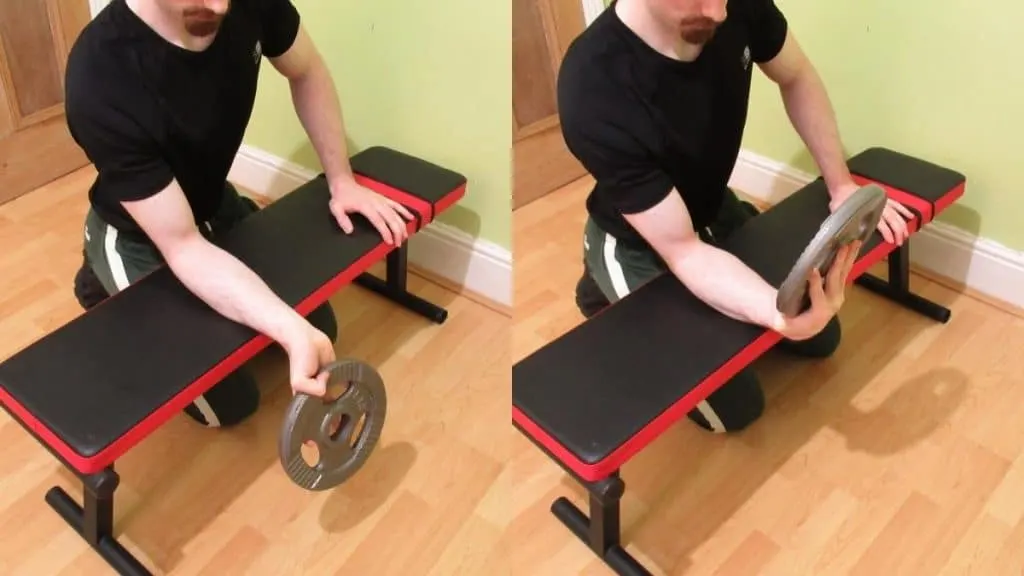
- Hold a weight plate between your fingers and thumb.
- Rest the top of your forearm on your knee or on a weight bench.
- Slowly lower the weight disc by bending your wrist.
- Descend until you feel a good forearm stretch and then bring the weight back up by flexing your wrist.
Bear in mind that longer plates of the same weight will be more challenging because a larger disc puts the muscles at a leverage disadvantage.
Plate wrist curl benefits
The forearm plate curl is a killer grip exercise with many underappreciated benefits for those seeking stronger hands and muscular lower arms.
See also: female forearm exercises
Increases your grip strength
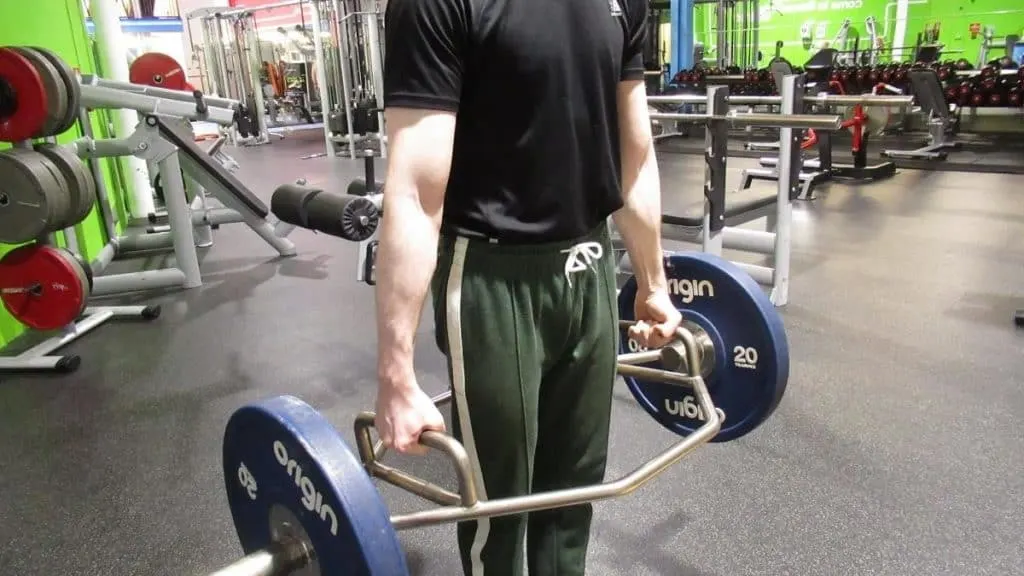
Let’s start with the obvious. Since you have to pinch the plate during the entirety of this wrist curl variation, you’re going to develop formidable grip/pinching stretch if you perform this little-known movement consistently.
As you gain strength on this underrated forearm-builder, don’t be surprised if you also get stronger at other grip exercises.
In my opinion, and from what I’ve heard in various discussions, the plate wrist curl is one of the most demanding forearm drills out there. So if you can master it, then the resulting strength could be record-breaking, whether that be on a world or personal level.
Strengthens your hands
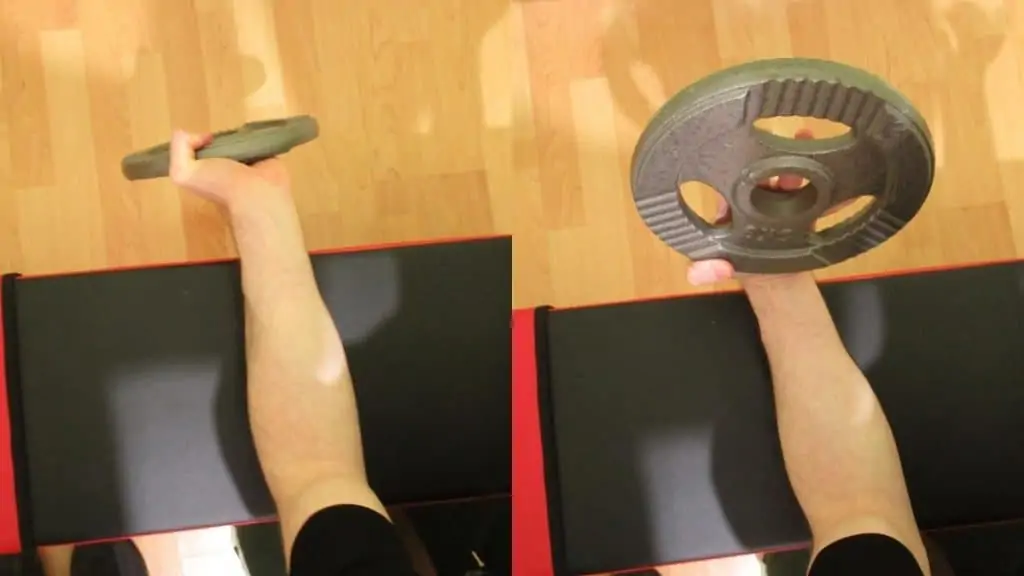
After doing plate forearm curls, you’ll notice that your hands and fingers, in particular, are fatigued. This is because many of the forearm muscles actually insert into your hands.
Plus, your hands and fingers have to contract very hard isometrically just to keep the plate from moving. Yet another reason why this exercise is a great grip strengthener.
Improves wrist control
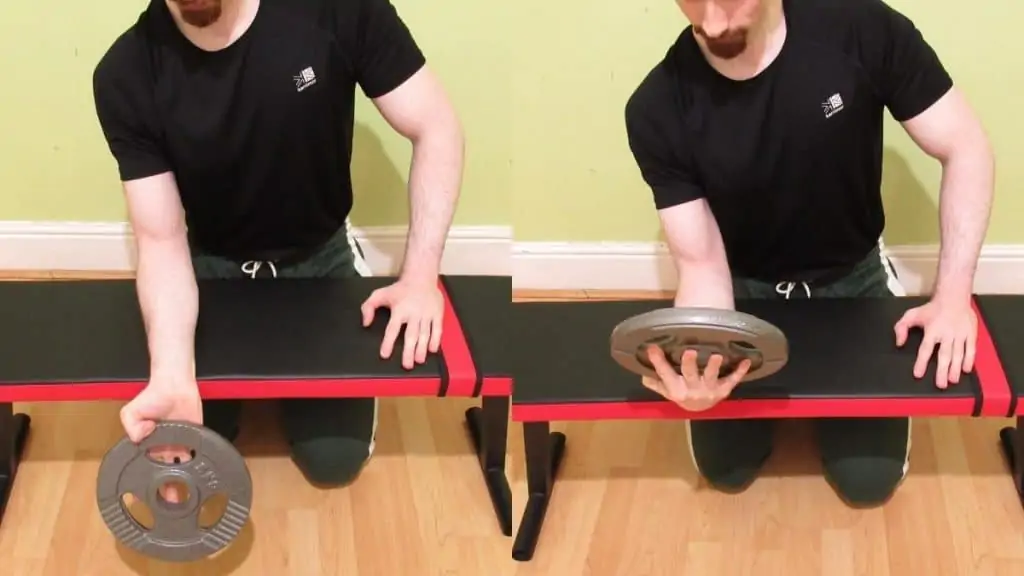
Doing regular forearm curls is easy. In fact, it’s so straightforward that some lifters even let the bar roll into their fingers without controlling it.
Suffice to say that you can’t get away with such a lackluster approach to training when you’re doing the plate wrist curl. Lowering the weight requires intense focus and control of the wrist.
This control will carry over onto other lower arm exercises and will likely also improve what bodybuilders would call your mind-muscle connection.
Builds your forearm flexors

Strong forearms require large flexors. While the extensors certainly help, they simply don’t have the force output potential of the big meaty flexors.
As such, the more that you can challenge them, the better. Plate wrist curls are unique in that by working the muscles of the hands and fingers, you’re technically also working the flexors because, as I mentioned a moment ago, many of the lower arm muscles actually insert into the hand.
Extremely convenient
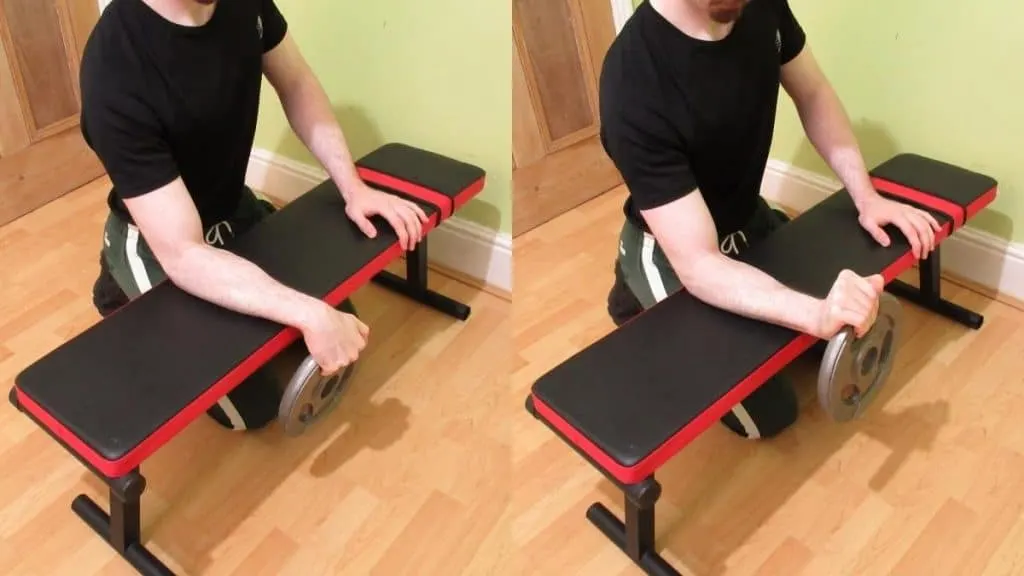
If you don’t have access to barbells or dumbbells for whatever reason, or if you don’t fancy trekking to the gym just to train forearms, then you can do plate wrist curls at home with a simple weight disc. You’ll be less likely to skip a workout because of this, too. [1]
Plate wrist curl alternatives
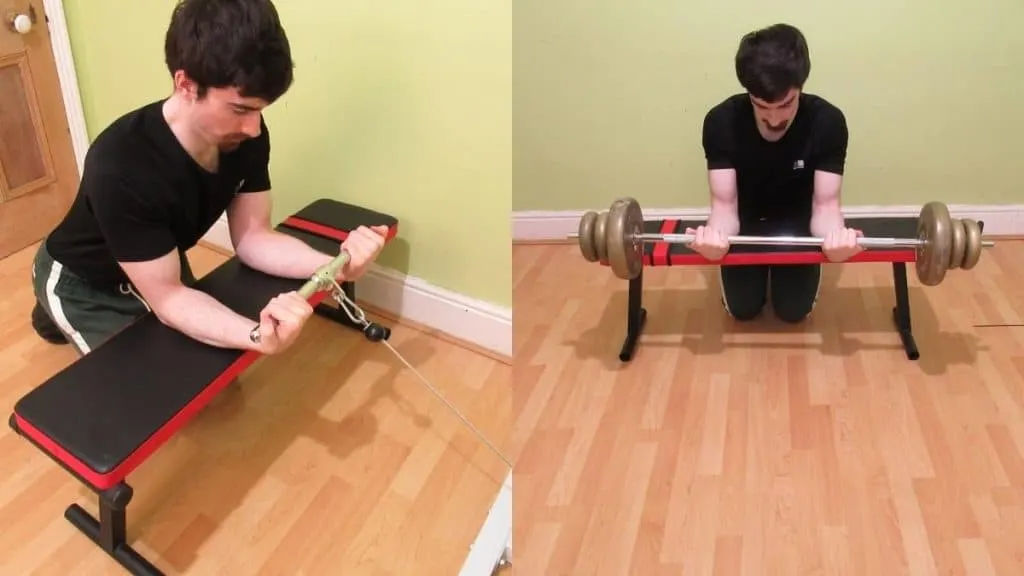
Any good strength training routine consists of more than one exercise. And that’s no different for the forearms. Check out these tutorials for more information on how to do each drill correctly.
- Barbell forearm curl
- Behind the back wrist curls
- Cable wrist curls
- EZ bar forearm curl
- Forearm twist exercise
- Palm down wrist curl
- Reverse barbell wrist curl over a bench
- Reverse forearm curls
- Standing reverse forearm curl
Standing forearm curls
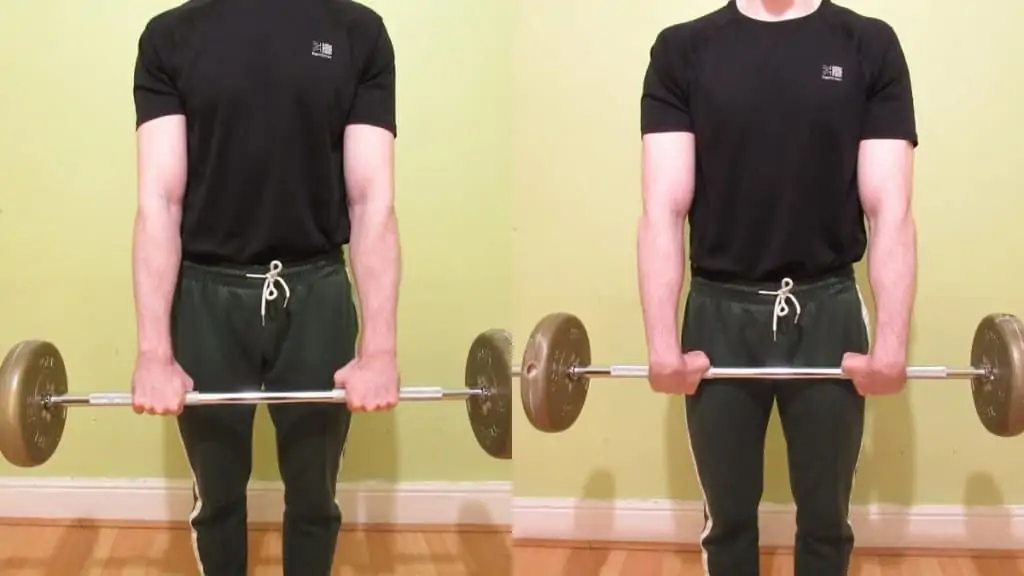
Standing forearm curls are ultra convenient because you literally just grab a barbell (or 2 dumbbells) and lift.
Doing them over a bench means that you’re less likely to cheat. However, the initial setup can be complicated, and it also puts your wrists at risk since you have to awkwardly hoist the bar onto the bench.
Forearm roller

The forearm roller (also known as a wrist roller) is a great complement to plate wrist curls because it trains both the endurance and strength of your forearm musculature.
Likewise, with a your simple roller device and a few weight plates, you can use the roller anywhere you go, irrespective of whether or not you’re in the gym.
Single dumbbell forearm curl
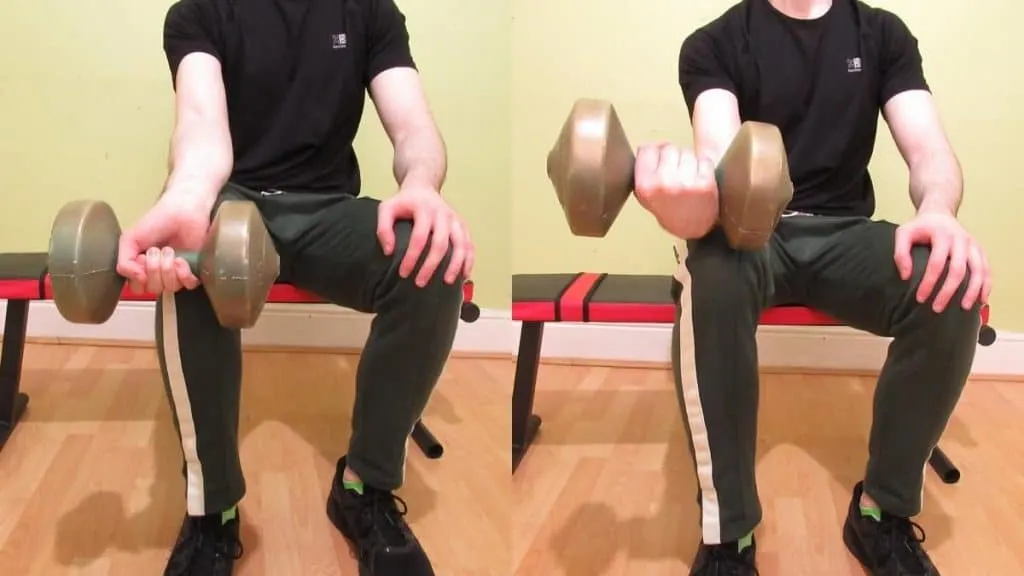
If you don’t yet have the strength to perform plate wrist curls, then give the single dumbbell forearm curl a try. While it’s much easier to grip dumbbells than weight discs, this drill will still build up that forearm flexor strength so that you’re able to grip heavier weight plates in the future.
Moreover, by training each arm separately, you’re less likely to develop muscle imbalances.
Read more: shoulder and forearm training
The verdict on Plate wrist curls
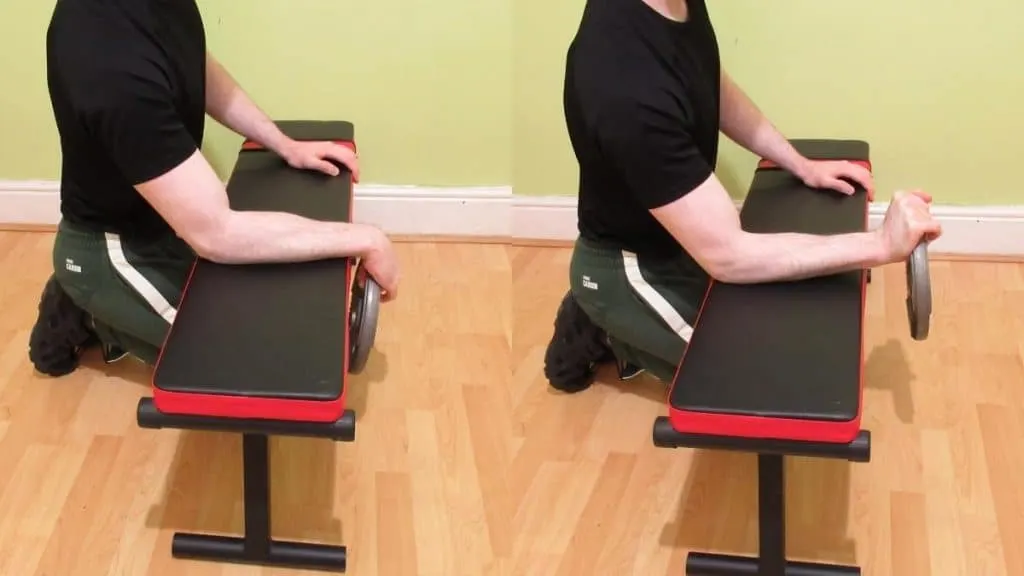
One thing’s for sure: Plate wrist curls are incredibly underrated. While they have a reputation as a grip strength exercise, let’s be honest, if you can do wrist curls with a 35lb plate or even just a 25lb plate, you’re not going to have scrawny forearms. [2]
If more people actually understood the correlation between strength and size, they wouldn’t be afraid to do these unconventional exercises. But for now, it seems like we’re going to have to keep the gains for ourselves until the gym bros catch up.
References
- Powell, K. E., Martin, L. M., & Chowdhury, P. P. (2003). Places to Walk: Convenience and Regular Physical Activity. American Journal of Public Health, 93(9), 1519–1521. https://doi.org/10.2105/ajph.93.9.1519
- Maughan, R. J., Abel, R. W., Watson, J. S., & Weir, J. (1986). Forearm composition and muscle function in trained and untrained limbs. Clinical Physiology, 6(4), 389–396. https://doi.org/10.1111/j.1475-097x.1986.tb00244.x

